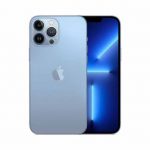Apple iPhone 13 Pro Models Use Samsung LTPO Technology for 120Hz Display
Samsung is the exclusive supplier of LTPO OLED displays for the “Pro” models in Apple’s iPhone 13 lineup.
Apple‘s adoption of LTPO display technology would allow it to implement a 120Hz refresh rate on the higher end next-generation iPhones:
Who makes the Display for iPhone 13?
Samsung Display is the exclusive supplier used by Apple for organic light-emitting diode (OLED) panels used in the two highest tier models of its next iPhone, TheElec has learned.
Both models of iPhone 13 will use low-temperature polycrystalline oxide (LTPO) thin-film transistors (TFT) OLED panels made by Samsung Display.
What is 120Hz LTPO display?
Short for low-temperature polycrystalline oxide, LTPO is a new display technology that allows phone-makers to add variable refresh rate (VRR) to their devices. This in turn makes it easier to add 120Hz refresh rates to phones, while also enables longer battery life.
These LTPO displays have already appeared on 2021 phones like the Galaxy S21 Ultra and OnePlus 9 Pro. Analysts also expect these panels to appear on future upgraded flagships like the iPhone 13 Pro and Samsung Galaxy S22 Ultra. You’ll notice a common trend here: for now, companies are reserving LTPO displays for their most expensive devices.
What is an LTPO display and how does it work?
Before we dive into the technical details, here’s the gist of what you need to know about LTPO: it’s a silicon-oxide material designed to support high, variable refresh rates while simultaneously keeping energy efficiency high. It ensures that a phone’s 120Hz mode won’t destroy its battery life.
Apple first popularized the tech, but in 2021 Samsung is the king of LTPO manufacturing; the company allegedly will create 110 million LTPO displays for Apple to add to its iPhone 13s later this year.
Phone displays look like a single layer of glass, right? Wrong! They’re actually made up of several tiered layers of different components, which combine to make the display function. OLED displays, for instance, have six layers, some with positive or negative charges that help emit light.
Among those layers, you’ll find (on your current phone) a built-in thin-film transistor (TFT) made of low-temperature polycrystalline silicon, or LTPS. A phone display cannot function without a TFT because glass cannot act as a semiconductor. And most recent phones have TFTs made of LTPS, which helps the display remain as energy-efficient as possible.
Is iPhone Display made by Samsung?
Samsung Begins Mass Production of 120Hz OLED LTPO Display Panels for iPhone 13 Pro, iPhone 13 Pro Max
Samsung Display is reported to produce over 120 million OLED panels for Apple this year.
Samsung reportedly produce OLED display panels for select models in the iPhone 13 range.
The company is reported to produce OLED panels with 120Hz refresh rate and LTPO technology for the iPhone 13 Pro Max and the iPhone 13 Pro, which would make this series the first from Apple to get 120Hz refresh rate. It will also reportedly produce OLED screens for some iPad models, starting next year.
Korean publication TheElec reports that Samsung Display will produce over 80 million OLED panels for Apple at its A3 Line inside the Asan plant. It is said to be manufacturing OLED panels for the premium models in the iPhone 13 range, rumoured to be the iPhone 13 Pro and iPhone 13 Pro Max. Additionally, the Korean company will also reportedly continue to produce OLED panels for the iPhone 12 and older models, even after the launch of the iPhone 13 series. In total, Samsung is expected to produce 120 million OLED units for Apple in this year.
LG Display is said to be the other provider of OLED panels for the rest of the iPhone 13 series. These are likely going to be the iPhone 13 mini and iPhone 13 phones. The report says that LG Display will produce 30 million OLED units for the iPhone 13 range, and 50 million OLED units in total (for older iPhones) for Apple this year. Chinese manufacturing giant BOE will also reportedly produce 9 million OLED panels for Apple. Furthermore, the report also adds that production of OLED panels has already begun by the three companies. This is one month earlier than the timeline followed last year, indicating that the company may launch the iPhone 13 range a little earlier than the iPhone 12 range last year.
Samsung Display showcases flexible OLED screens
2023 iPhone may ditch Samsung displays for Chinese screens
Ever since Apple made the switch to OLED panels with the iPhone X series in 2017, it has relied on Samsung to source a majority of these panels. Samsung was an obvious choice for Apple for the sole reason that it was (and continues to be) the world’s largest manufacturer of OLED panels, with LG coming in a distant second.
This changed in 2020 when Apple signed up a little-known Chinese company called BOE to make displays for its lower-tier iPhone 12. While Samsung and LG continue to supply Apple with OLED panels, 2023 may finally see BOE increase the number of displays it makes for Apple. It is also likely to meet the stringent quality standards set by Apple so its screens can end up on the future top-tier iPhone 15 Pro model.
Even though BOE has been an Apple supplier for a long time, having supplied LCD panels in the past, its entry into the exclusive club of OLED manufacturers was a significant milestone in the company’s history. To reduce its dependence on a single supplier for something as crucial as the display, Apple inked a deal with LG Display to supply it with OLED panels. LG’s production capacity, however, hasn’t been able to scale up or even come close to Samsung’s levels — and Apple’s expectations. Unsurprisingly, until 2020, 80% of Apple products with an OLED panel used Samsung panels, with the other 20% using LG-made displays.
What are LTPO Displays?
Although LTPO tech on a smartphone first came into notice with Samsung Galaxy Note 20 Ultra, lately, we have seen this being adopted by several brands. It brings in several big and small refinements over the traditional technology used for the display.
You may hear it under different names like HOP (hybrid oxide and polycrystalline silicon) or ProMotion. But, it is LTPO, which Apple and Samsung have used on their smartwatches for a couple of years, and is now being used on phones.
What is an LTPO Display? What are its advantages?
LTPO, which stands for low-temperature polycrystalline oxide, is shaping up to be the next-generation technology for premium phones and wearables. It basically combines LTPS and IGZO for the display backplane. Let us explain.
Every AMOLED display has a backplane that determines when individual pixels turn on and how bright they glow. Most backplanes use two separate transistors (TFTs) – one for switching on a pixel (Switching TFTs) and one for maintaining its brightness (driving TFTs). The Driving TFT is also accompanied by a Capacitor that samples and holds a voltage to uniformly drive a pixel brightness.
LTPO Vs LTPS vs IGZO: What’s the difference?
As described above, each AMOLED pixel comprises of two Thin Film Transistors (TFT)- Driving TFT and Switching TFT- and one Capacitor. In an LTPO display, the switching circuits use LTPS TFT and driving circuits use IGZO TFT.
Amorphous Silicon (a-Si) TFT technology used to be dominant for display backplanes. With a need for high resolution and brighter screens, the industry shifted to LTPS TFT backplanes (for both OLED and LCD), and then the need for higher resolution and high-refresh-rate brought in more complicated IGZO TFT (Oxide TFT) panels.
LTPS (Low-temperature polycrystalline silicon) backplanes have higher electron mobility and thus can turn pixels on/off faster. Or transistor size can be reduced and more transistors can now be added within the same space, thus resulting in more pixels or higher resolution. However, along with faster mobility, LTPS panels also have higher leakage.
IGZO (indium gallium zinc oxide) backplane technology or transistors used in backplanes that are often used for IPS LCD displays. IGZO transistors are transparent and thus IGZO backplane displays require less backlight power and consume less power. Electron Mobility of IGZO is as high as LTPS and these displays are more touch-sensitive (we are guessing the use of IGZO in Samsung Galaxy Note20 Ultra’s display plays a major role in reducing S Pen latency to 9ms).
Apple’s switch to LTPO displays in iPhone 13 will make it the dominant tech by 2023
A handful of rumors have indicated that this year’s iPhone 13 will use new LTPO display technology to enable ProMotion high-refresh rate. Now, display analyst Ross Young is corroborating this expectation, saying that Apple’s adoption of LTPO will help make it the dominant display technology over the next two years.
For those unfamiliar, Ross Young is an analyst for Display Supply Chain Consultants. As such, his reporting is usually based on indications from the supply chain similar to analysts such as Ming-Chi Kuo.
Young posted on Twitter today that DSCC now expects LTPO display technology to overtake LTPOS AMOLED smartphones by the end of 2023 in terms of the percentage share of the global market on a revenue basis. This aligns with Apple’s planned transition to LTPO in the iPhone lineup.
A report from The Elec last month said that Samsung will convert its low-temperature polycrystalline silicon (LTPS) TFT OLED display manufacturing into LTPO OLED manufacturing for the iPhone 13.
In the case of the Series 5 Apple Watch, having an LTPO display is good because it lets apple dynamically change the refresh rate on the wearable’s screen. If you’re looking at an interacting with it, they crank it up. If it’s idle, they only really need to refresh it once a minute or so.
With a contrast ratio of 1,000,000:1 or higher, Samsung OLED™ is the best display for realising High dynamic range (HDR) because it can express detailed, deeper and more three-dimensional images.
AMOLED is a display technology and stands for Active Matrix Organic Light Emitting Diodes. It is a type of OLED display and is used in smartphones.
Also read :
- What else can I use Instead of iCloud? Best iCloud Alternatives
- Which Powerbeats are the best? Are AirPods better than Beats?
- What is the difference between iPhone 13 and 13 pro + Video Review


































